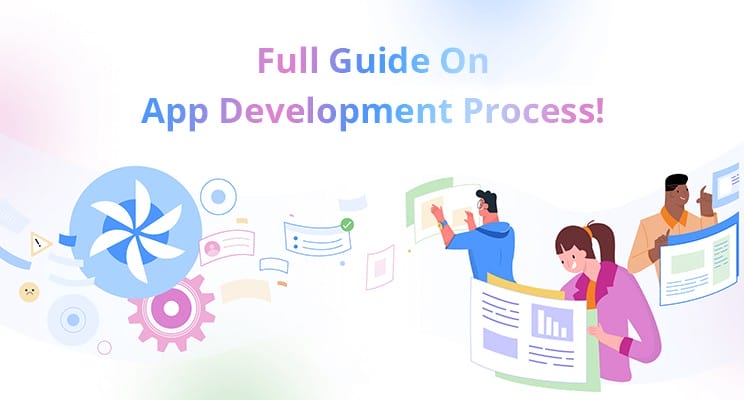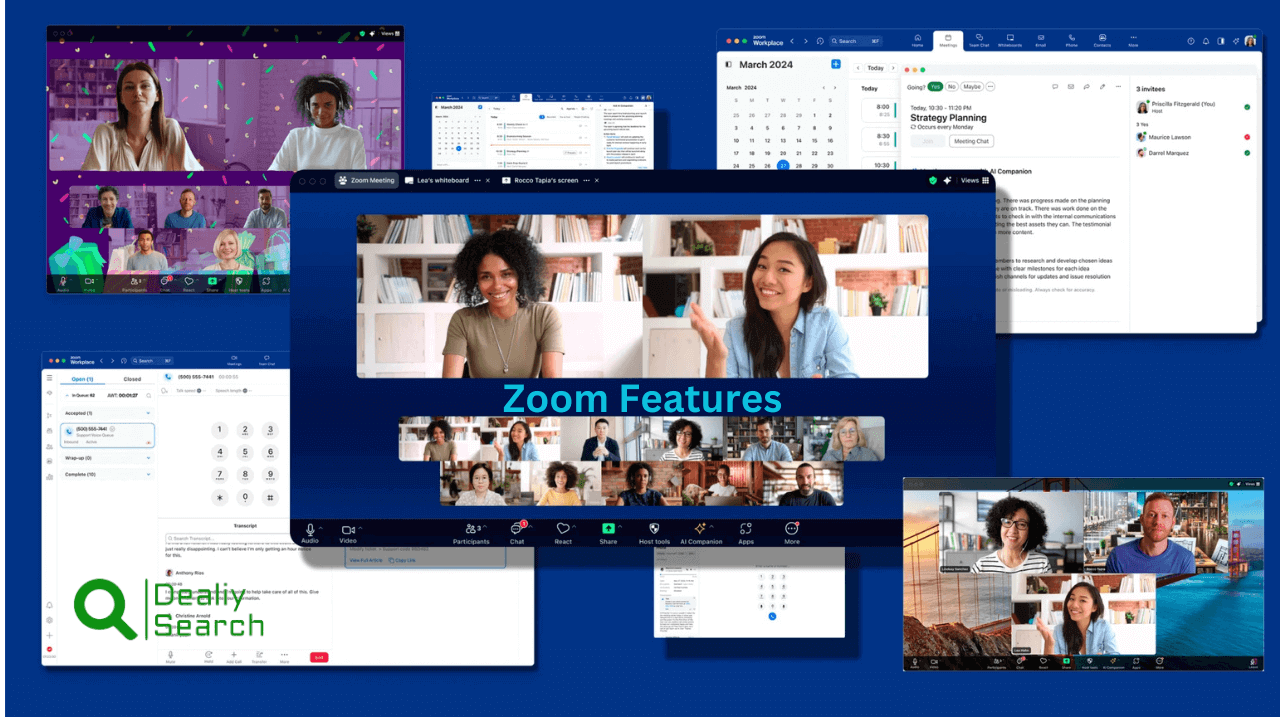Demystifying App Development: Simplifying the Process for Seamless Creation

As technology advances rapidly, the demand for mobile applications has skyrocketed. Whether for business purposes, entertainment, or convenience, apps have become integral to our daily lives. However, developing an app can often be overwhelming and complex, leaving many individuals and businesses needing guidance on where to begin. In this article, I will demystify the app development process and provide valuable insights on simplifying this intricate journey.
Common misconceptions about app development
Before diving into the intricacies of app development, it’s essential to address some common misconceptions that often surround this field. One prevalent misconception is that app development is only for large corporations or experienced developers. In reality, anyone with a great idea and determination can embark on the app development journey. With the right resources and guidance, even individuals or small businesses can bring their app ideas to life.

Misconception is that app development requires extensive coding knowledge. While coding is undoubtedly a crucial aspect of app development, various tools and frameworks are available today that simplify the process, making it more accessible to those with limited coding experience. It’s important to understand that app development is a multidisciplinary field encompassing design, user experience, marketing, and more. By recognizing the diverse skill sets required, we can approach app development with a broader perspective.
The importance of simplifying the app development process
Simplifying the app development process is beneficial for individuals and businesses venturing into this field and for the overall growth of the app market. By minimizing complexities and streamlining the process, more individuals can participate in app development, leading to a greater diversity of ideas and innovations. Furthermore, simplification allows for faster development cycles, facilitating quicker app time-to-market and reducing costs.

Simplifying the app development process contributes to better user experiences. User-centric design and intuitive interfaces are crucial in today’s competitive app landscape. Developers can create apps that resonate with their target audience by focusing on simplicity and ease of use during the development phase, resulting in higher user satisfaction and engagement.
Critical steps in the app development process
The app development process involves several critical steps to ensure a successful and functional application. First, ideation and research help define the app’s purpose, target audience, and market demand. Next, planning and prototyping involve creating wireframes and mockups to visualize the user interface and user experience (UI/UX). After that, development begins, where programmers write code using suitable frameworks and technologies. Testing follows, identifying bugs and ensuring smooth performance across devices. The app is refined, deployment takes place, releasing it on platforms like the App Store or Google Play. Maintenance and updates are crucial to fix issues, improve features, and adapt to user feedback, ensuring the app’s long-term success.

- Idea Generation: The first step in app development is brainstorming and refining your idea. This involves identifying the problem your app will solve, researching the market, and analyzing potential competitors. You can develop a unique and valuable app concept by thoroughly understanding your target audience and their needs.
- Planning and Strategy: Once you have a solid app idea, creating a comprehensive plan and strategy for development is crucial. This includes defining the app’s features and functionalities, creating wireframes and mockups, and establishing a timeline and budget for the project. A well-defined plan sets the foundation for a successful app development journey.
- UI/UX Design: User interface (UI) and user experience (UX) design are pivotal in creating an engaging and intuitive app. During this phase, designers create visually appealing interfaces, optimise user flows, and ensure seamless navigation. By prioritizing simplicity and user-centric design principles, developers can enhance the overall app experience.
- Development: The development phase involves coding and building the app according to the planned features and functionalities. This step requires collaboration between developers, designers, and other stakeholders. Choosing the proper app development framework and programming language can significantly simplify the development process and improve efficiency.
- Testing and Quality Assurance: Thorough testing is essential to ensure the app functions as intended and is free from bugs or glitches. This involves conducting various tests, such as functional testing, usability testing, and performance testing. Developers can identify and address issues by implementing a robust testing and quality assurance process before the app is released.
- Deployment and Updates: Once the app has been thoroughly tested and deemed ready for launch, it’s time to deploy it to the intended app stores or distribution platforms. This step involves adhering to specific guidelines and requirements set by the respective platforms. Additionally, developers must plan for future updates and improvements to keep the app relevant and competitive.
Choosing the proper app development framework
Picking the right framework is key to building a high performing and scalable app. It depends on the app’s purpose, target platform, performance requirements and developer expertise. Native frameworks like Swift (for iOS) and Kotlin (for Android) give you better performance and device feature integration but require separate development for each platform. Cross platform frameworks like React Native, Flutter and Xamarin allow you to write one codebase for multiple platforms, reducing development time and costs. Also consider community support, third party integrations, security and scalability before making a decision. Choosing the right framework will give you efficiency, better user experience and long term maintainability of the app.

- React Native: React Native is a cross-platform framework that allows developers to build native-like apps using JavaScript. Its ability to reuse code across multiple platforms significantly speeds up development time and simplifies the app development process.
- Flutter: Flutter is another cross-platform framework that utilizes the Dart programming language. It offers a rich set of pre-built UI components, enabling developers to create visually appealing apps easily. Flutter’s “hot reload” feature allows for real-time code changes, enhancing the development experience.
- Ionic: Ionic is a popular framework for building hybrid mobile applications using web technologies such as HTML, CSS, and JavaScript. It provides a wide range of pre-built UI components and integrates seamlessly with popular frameworks like Angular.
By carefully evaluating the requirements of your app and considering factors such as platform compatibility, performance, and developer expertise, you can choose the most suitable app development framework for your project, simplifying the development process and optimizing outcomes.
Simplifying app design and user experience
Simplifying app design and user experience (UX) is essential to ensure user engagement and satisfaction. A clean, intuitive interface with minimal clutter allows users to navigate effortlessly. Prioritizing usability and accessibility by using clear icons, readable fonts, and a consistent layout enhances the overall experience. Reducing unnecessary steps in user interactions, such as one-click sign-ins or autofill options, improves efficiency. Responsive design ensures that the app works smoothly across different devices and screen sizes. Incorporating user feedback and testing the app with real users help identify pain points and refine the design. A well-structured, simple, and user-friendly app increases retention rates and enhances overall usability.
- Minimalism: Embrace minimalistic design principles by keeping the app interface clean and uncluttered. Remove unnecessary elements and focus on the core features and functionalities. This simplifies the user experience and reduces cognitive load.
- Consistency: Maintain consistency in design elements, such as colour schemes, typography, and iconography, throughout the app. This creates a cohesive and familiar experience for users, allowing them to navigate the app effortlessly.
- User-Centric Approach: Put yourself in the user’s shoes and prioritize their needs and preferences. Conduct user research and usability testing to gain insights into user behaviour and preferences. Incorporate user feedback into the design process to create a user-centric app that meets their expectations.
- Intuitive Navigation: Ensure users can navigate the app seamlessly and intuitively. Use clear and concise labels, provide visual cues, and minimize the number of steps required to complete tasks. Intuitive navigation simplifies the user experience and reduces the learning curve.
- Responsive Design: With the increasing variety of devices and screen sizes, it’s important to develop apps that adapt to different screen resolutions and orientations. Responsive design ensures the app remains visually appealing and functional across various devices, simplifying the development process and enhancing user experience.
Testing and quality assurance in app development
Ensuring the quality and reliability of an app is paramount before its release. Thorough testing and quality assurance processes help identify and resolve any issues or bugs, resulting in a seamless user experience. Here are the critical aspects of testing and quality assurance in app development:
- Functional Testing: This involves testing the app’s core functionalities to ensure they work as intended. Testers simulate user scenarios and interactions to identify functional issues or inconsistencies.
- Usability Testing: Usability testing evaluates the app’s ease of use and user-friendliness. Testers provide feedback on the app’s intuitiveness, navigation, and overall user experience. This feedback helps developers refine the app’s design and user interface.
- Performance Testing: Performance testing assesses the app’s speed, responsiveness, and stability under different conditions. Testers measure app load time, response time, and resource usage to identify performance bottlenecks.
- Compatibility Testing: Testing ensures the app functions correctly across various devices, operating systems, and screen resolutions. Testers verify the app is compatible with different hardware configurations, software versions, and network conditions.
- Security Testing: Security testing focuses on identifying the app’s vulnerabilities and potential security risks. Testers simulate various attack scenarios to assess the app’s resilience and ensure that user data is adequately protected.
Streamlining app deployment and updates

Once the app development process is complete, the next step is deploying the app to the intended app stores or distribution platforms. Streamlining this process simplifies app distribution and ensures a broader reach. Here are some critical considerations for app deployment:
- Platform Guidelines: Different app stores and platforms have specific guidelines and requirements for app submission. Developers must familiarize themselves with these guidelines and ensure the app meets all the criteria.
- App Store Optimization (ASO): ASO involves optimizing the app’s metadata, keywords, and visuals to improve its visibility and discoverability within app stores. By optimizing the app’s listing, developers can attract more organic downloads and simplify the app discovery process for users.
- Automated Updates: Planning for future updates and improvements is crucial to keeping the app relevant and competitive. By implementing automated update mechanisms, developers can simplify the update process and ensure that users have seamless access to the latest features and bug fixes.
- User Feedback and Support: Encouraging user feedback and providing responsive customer support is vital for maintaining a positive app experience. Developers can continuously improve the app and ensure user satisfaction by actively listening to user feedback and promptly addressing any issues or concerns.
Development Process
The development process of an app involves multiple stages, including frontend and backend development, integrating core features, and ensuring smooth user interactions. It begins with setting up the development environment, which includes installing the necessary Integrated Development Environments (IDEs) like Android Studio, Xcode, or Visual Studio Code, and configuring emulators or real devices for testing. The frontend development focuses on building the user interface (UI) using frameworks such as React Native, Flutter, or Swift for iOS and Kotlin for Android. Meanwhile, backend development involves setting up servers, managing databases (like Firebase, MySQL, or MongoDB), and ensuring secure API connections for seamless data transfer.
- Integrated Development Environments (IDEs): IDEs such as Android Studio, Xcode, and Visual Studio provide a comprehensive development environment with features like code editors, debugging tools, and emulators. These tools streamline the development process and enhance productivity.
- App Prototyping Tools: Tools like Sketch, Figma, and Adobe XD enable developers to create interactive prototypes and wireframes. Prototyping tools simplify the design process by allowing developers to visualize and test app ideas before developing.
- Code Libraries and Frameworks: Pre-built code libraries and frameworks, such as Bootstrap, jQuery, and CocoaPods, simplify the development process by providing reusable components and functions. These resources save time and effort while ensuring code quality.
- App Analytics Tools: Firebase Analytics, Google Analytics, and Mixpanel provide valuable insights into user behaviour, app performance, and engagement metrics. These tools help developers make data-driven decisions and optimize the app’s performance.
- Online Learning Platforms: Online learning platforms like Udemy, Coursera, and Codecademy offer courses and tutorials on various app development topics. These platforms provide a wealth of knowledge and resources, making it easier for individuals to learn and enhance their app development skills.
Frequently Asked Question
What are the key of app development?
The app development process typically involves six main stages: ideation and research, planning and prototyping, development, testing, deployment, and maintenance. Each step ensures a smooth and efficient build for the final product.
Which is better: native or cross-platform app development?
Native apps (Swift for iOS, Kotlin for Android) offer better performance and seamless integration with device features, while cross-platform frameworks (React Native, Flutter) reduce development time and cost by using a single codebase for multiple platforms.
How long does it take to develop an app?
The development timeline depends on the complexity of the app, features, and platform requirements. Simple apps may take a few weeks, while complex applications can take several months or more.
How can I ensure my app is user-friendly?
Focus on intuitive UI/UX design, minimize clutter, provide easy navigation, and conduct user testing. Gathering user feedback and making necessary improvements also enhance the app’s usability.
What factors influence the cost of app development?
The cost depends on app complexity, platform choice (iOS, Android, or both), development framework, third-party integrations, design requirements, and maintenance needs. Hiring experienced developers also impacts the overall cost.
Conclusion
App development doesn’t have to be a daunting and complex task. By demystifying the process and simplifying key steps, individuals and businesses can confidently embark on this journey. From idea generation to app deployment, each stage can be approached with a focus on simplicity and user-centric design. By leveraging the right tools, frameworks, and resources, developers can streamline the development process and create apps that enhance user experiences. So, let’s embrace the app development world and bring our ideas to life, one simplified step at a time.






